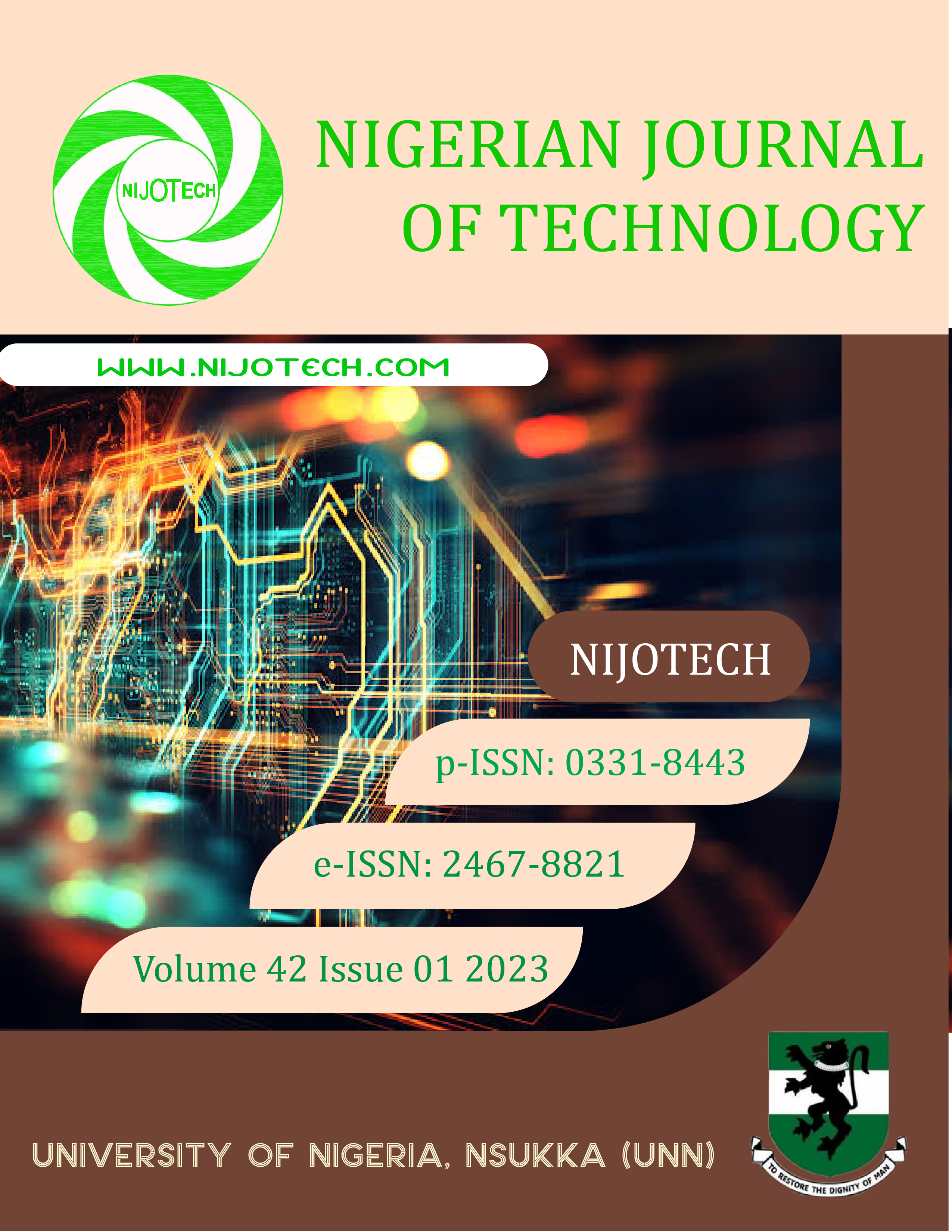MODELLING REWORK COST FOR TETFUND BUILDING CONSTRUCTION PROJECTS IN NIGERIA
DOI:
https://doi.org/10.4314/njt.v42i1.9Keywords:
Rework cost, Project scope and non-scope factors, TETfund building projects, Principal Component Analysis, Multiple Linear RegressionAbstract
Accurate predictions of rework cost enable contractors to evaluate how successful their projects are likely to be, thus, improve their operations and productivity. Studies have developed project scope-based and non-scope-based rework cost predictive models. However, researchers have criticized the accuracy of these models because of their weaknesses in giving individualistic treatments to project scope-based and non- scope-based rework cost influencing factors. This study therefore aimed at developing rework cost predictive models that combine the synergistic effects of both project scope-based and non-scope-based rework cost factors. 440 sample size was drawn from 2,638 population of Tertiary Education Trust Fund (TETfund) building projects constructed between 2009 to 2015. Data of 287 (65%) of 440 (sample size) of completed TETfund building projects on project scope factors as well as the extent of influence of the non-scope factors on cost of rework in TETfund building projects was collected. Principal Component Analysis (PCA) and Multiple Linear Regression (MLR) were used in developing an integrated rework cost predictive model. More accuracy was achieved in the integrated model through the incorporation of impact of project scope and non-scope influencing factors into rework cost prediction model, this increased the variability in cost of rework to R2 = 0.759 (75.9%), while errors in rework cost predictions reduced by as much as 9.75%.The model serve as useful tool used to enhance accuracy of rework cost predictions for TETfund building contractors, thus reduce cost of rework for building construction projects.
Downloads
Published
Issue
Section
License
Copyright (c) 2023 Nigerian Journal of Technology

This work is licensed under a Creative Commons Attribution-NonCommercial 4.0 International License.
The contents of the articles are the sole opinion of the author(s) and not of NIJOTECH.
NIJOTECH allows open access for distribution of the published articles in any media so long as whole (not part) of articles are distributed.
A copyright and statement of originality documents will need to be filled out clearly and signed prior to publication of an accepted article. The Copyright form can be downloaded from http://nijotech.com/downloads/COPYRIGHT%20FORM.pdf while the Statement of Originality is in http://nijotech.com/downloads/Statement%20of%20Originality.pdf
For articles that were developed from funded research, a clear acknowledgement of such support should be mentioned in the article with relevant references. Authors are expected to provide complete information on the sponsorship and intellectual property rights of the article together with all exceptions.
It is forbidden to publish the same research report in more than one journal.











